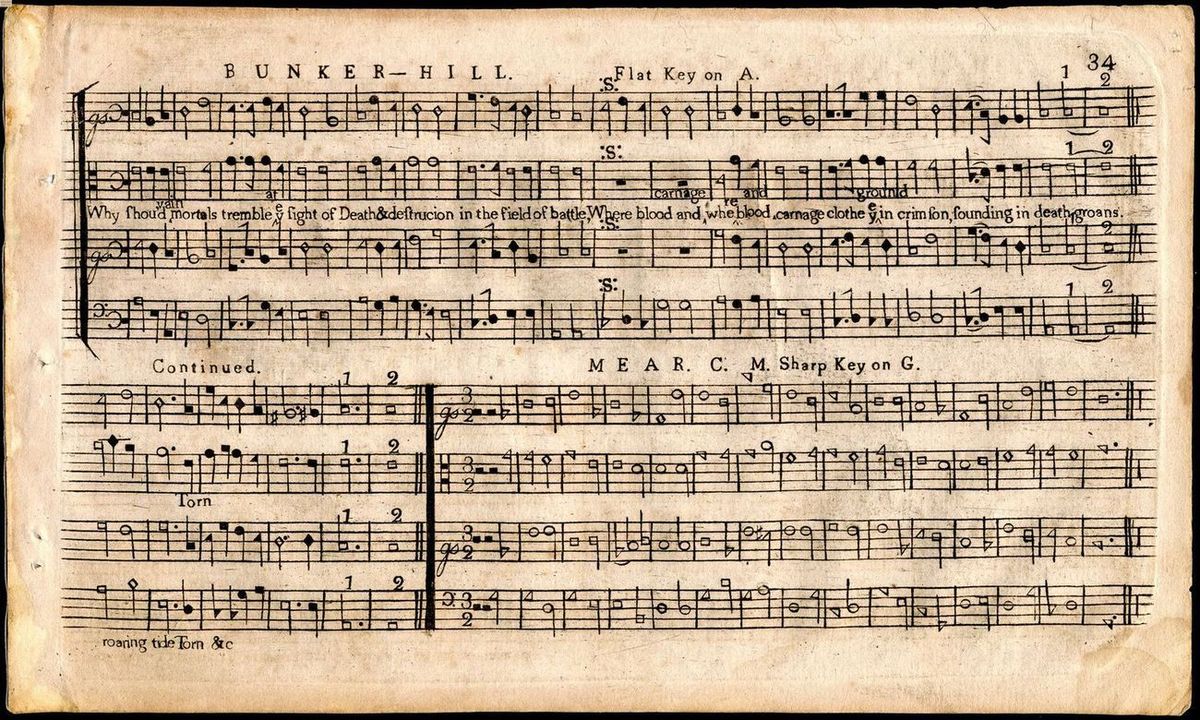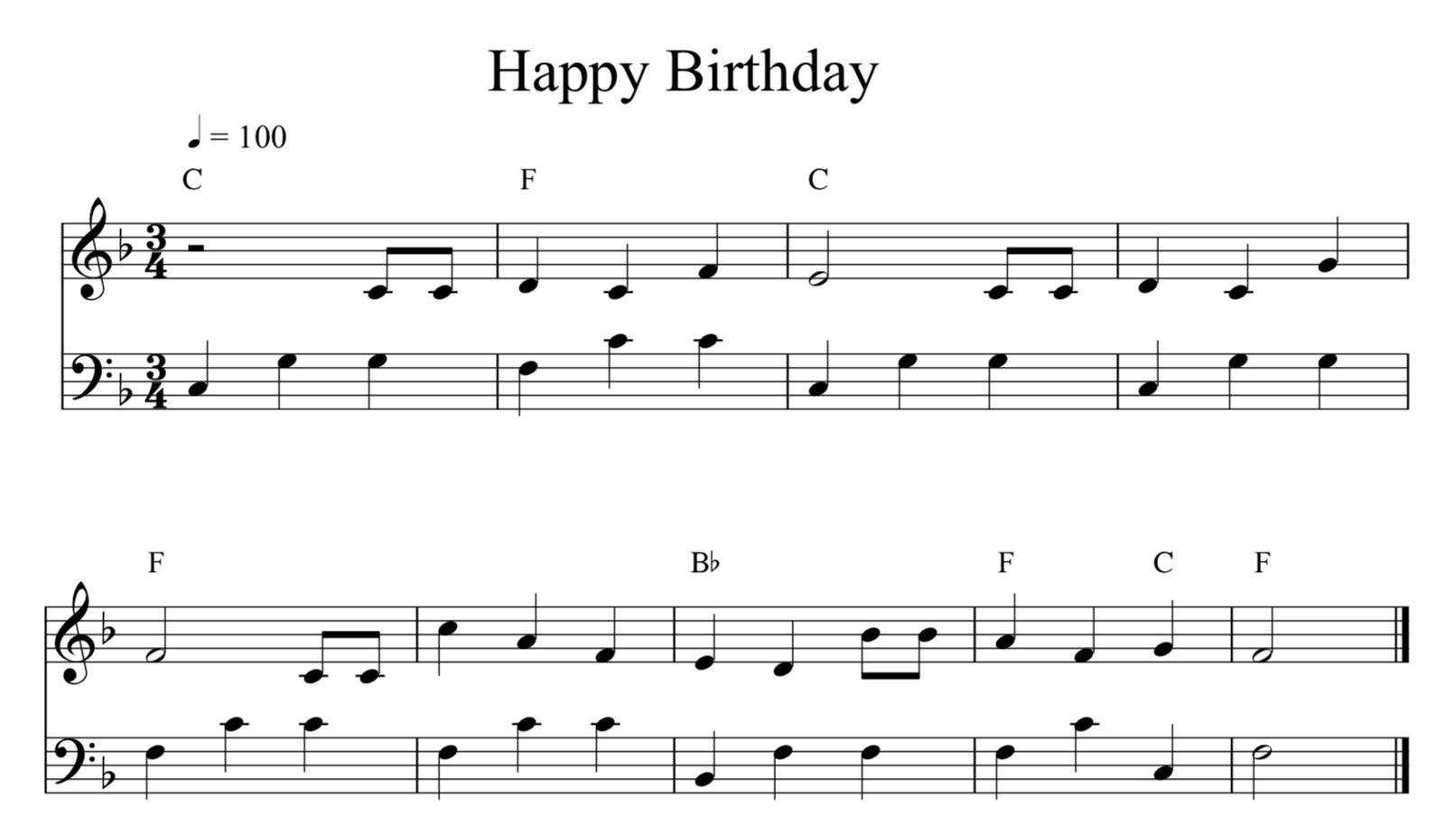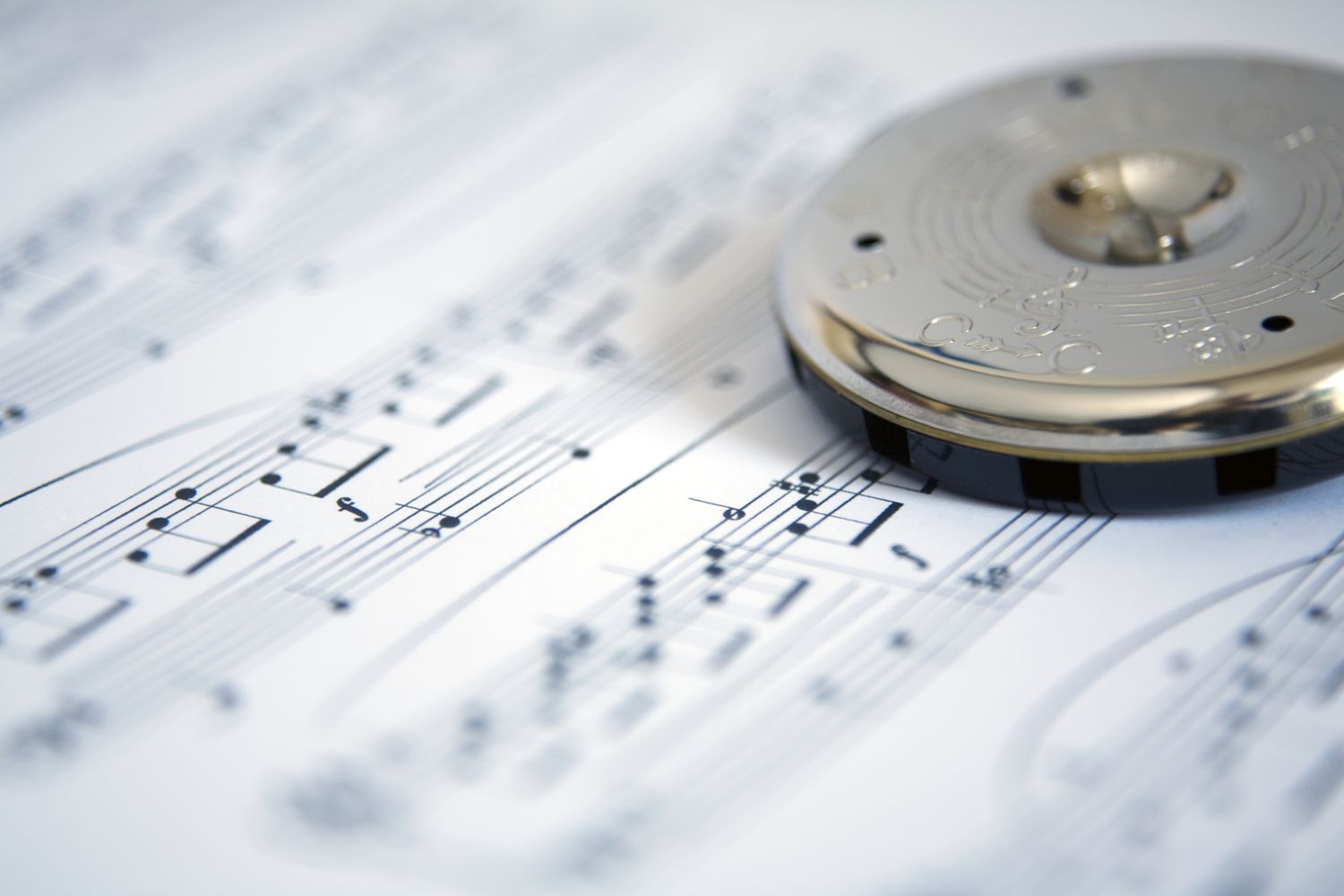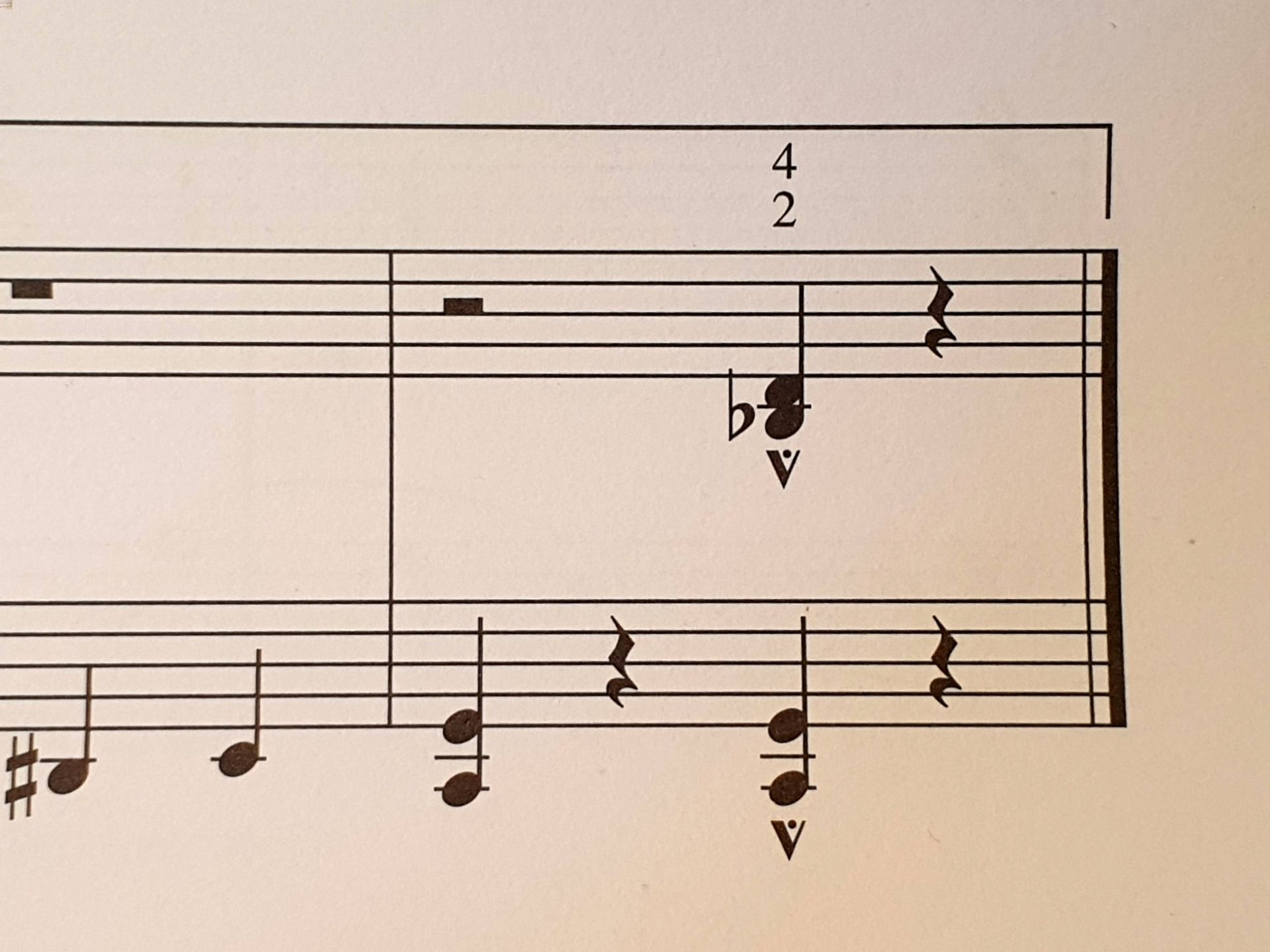Home>Events & Info>Note>In Music What Is A Shaped Note


Note
In Music What Is A Shaped Note
Published: December 5, 2023
Discover what shaped notes are in music and how they are used. Learn about the significance of notes and their different shapes.
(Many of the links in this article redirect to a specific reviewed product. Your purchase of these products through affiliate links helps to generate commission for AudioLover.com, at no extra cost. Learn more)
Table of Contents
- Introduction
- Definition of Shaped Note Music
- History of Shaped Note Music
- The Shape and Function of Shaped Notes
- Shapes and Their Corresponding Pitches
- Notable Examples of Shaped Note Music
- The Influence of Shaped Note Music in Various Genres
- Shaped Note Singing and Educational Programs
- Criticisms and Controversies Surrounding Shaped Note Music
- Conclusion
Introduction
Music has been an integral part of human culture for centuries, evolving and adapting to reflect the spirit and creativity of different eras and communities. Among the various musical traditions that have emerged throughout history, shaped note music stands out as a unique and distinctive method of music notation.
Shaped note music is a system of musical notation that utilizes different shapes to represent specific pitches. It offers a visual and easily recognizable way to read and sing music, making it accessible to individuals with limited musical training. This vibrant form of notation has played a significant role in religious and folk music traditions, leaving an indelible mark on the fabric of American musical heritage.
Throughout this article, we will explore the history, functions, and influence of shaped note music. We will delve into the fascinating world of shaped notes, examining the various shapes used and their corresponding pitches. We will also examine notable examples of shaped note music and its impact on different genres. Additionally, we will discuss the practice of shaped note singing and its use in educational programs.
However, it is important to note that while shaped note music has received praise and recognition, it has also faced criticisms and controversies. We will explore these issues and gain a comprehensive understanding of the influence and complexities of this unique musical tradition.
So, join us on this exciting journey as we unravel the secrets and significance of shaped note music, where shapes and sounds intertwine to create a harmonious tapestry of melody and meaning.
Definition of Shaped Note Music
Shaped note music, also known as shape-note singing or sacred harp singing, is a system of musical notation that uses different shapes to represent musical pitches. The shapes serve as visual cues to help singers identify the pitch intervals within a song. This unique method of notation originated in the late 18th century and gained popularity in the United States, particularly in the South, as a way to teach singing in community settings.
The shapes used in shaped note music are typically four different variations: a triangle, a square, a diamond, and a circle. Each shape is associated with a specific solfege syllable, allowing singers to easily identify pitches in a given melody. For example, the triangle shape corresponds to the syllable “fa,” the square represents “sol,” the diamond denotes “la,” and the circle signifies “mi.”
This form of notation simplifies musical reading and is designed to encourage participation from individuals with limited musical training. By associating specific shapes with musical pitches, shaped note music allows both experienced and novice singers to easily join in and harmonize. It emphasizes communal singing and the joy of collective music-making.
Shaped note music is often associated with religious hymnals and has been used extensively in Protestant Christian worship services. However, it has also made its way into secular settings, including folk songs, campfire gatherings, and social events. This inclusivity and accessibility have contributed to the widespread popularity and endurance of shaped note music throughout the years.
Despite its simplicity, shaped note music offers a rich and versatile musical experience. Its unique system of notation allows singers to express a wide range of emotions, from joyous and uplifting melodies to poignant and introspective harmonies. In many ways, shaped note music transcends the barriers of language and culture, connecting people through the universal language of music.
Today, shaped note music continues to thrive, with singing conventions, workshops, and performances held both nationally and internationally. Its inherent simplicity and communal nature make it a cherished part of American musical heritage and a testament to the power of music to unite and uplift the human spirit.
History of Shaped Note Music
The history of shaped note music traces back to the late 18th century in New England, where it emerged as a response to the need for a simplified and accessible method of music education. Prior to shaped note music, traditional notation was often seen as complex and inaccessible to many individuals, limiting their ability to participate in communal singing.
The earliest known publication of shaped note music is the “Easy Instructor” by William Little and William Smith in 1801. This influential songbook introduced the concept of using shapes to represent pitches, revolutionizing the way music was taught and performed. The success of the “Easy Instructor” paved the way for subsequent publications and the spread of shaped note music throughout the United States.
During the 19th century, shaped note singing gained prominence in the South, particularly among Protestant Christian congregations. Singing schools and conventions were established as a means of teaching and promoting this unique form of musical expression. These events provided an opportunity for communities to come together, learn, and experience the joy of singing in harmony.
The popularity of shaped note music continued to grow, reaching its peak in the mid-19th century. Numerous songbooks were published to cater to the demand for shaped note music, with some of the most notable collections being “The Sacred Harp” by B.F. White and E.J. King and “The Southern Harmony” by William Walker. These songbooks not only contained a vast repertoire of hymns but also served as cultural artifacts, preserving the musical traditions of their time.
As the 20th century dawned, advancements in music education and technology led to a decline in shaped note singing. Traditional notation became more widely understood, and the convenience of recorded music shifted the focus away from communal singing. However, shaped note singing persevered, thanks to dedicated individuals who sought to preserve and promote this cherished tradition.
In recent decades, interest in shaped note music has experienced a resurgence, propelled by a renewed appreciation for folk and traditional music. Shaped note singing conventions, workshops, and gatherings are now held regularly, attracting participants from diverse backgrounds. This revival not only celebrates the rich history of shaped note music but also showcases its enduring relevance and ability to foster community and connection.
The remarkable history of shaped note music is a testament to its enduring appeal and cultural significance. Despite the passage of time and the evolving musical landscape, shaped note music continues to captivate and inspire, reminding us of the power of music to bridge generations and evoke a shared sense of joy and togetherness.
The Shape and Function of Shaped Notes
The distinctive feature of shaped note music is, of course, the use of different shapes to represent specific musical pitches. These shapes serve as visual cues to aid singers in identifying and singing the correct notes within a song. The shape-note system simplifies the process of reading and singing music, making it accessible to individuals with minimal musical training.
The four primary shapes used in shaped note music are the triangle, square, diamond, and circle. Each shape corresponds to a different solfege syllable: triangle for “fa,” square for “sol,” diamond for “la,” and circle for “mi.” This system of assigning shapes to syllables allows singers to easily recognize and vocalize the pitch intervals in a melody.
The shapes themselves are not just arbitrary symbols but have functional purposes within shaped note music. They provide visual cues that help singers navigate the melodic structure of a piece. For instance, when encountering a triangle-shaped note, singers know that it represents the note “fa” and that the melody will follow a specific interval pattern based on that pitch. This visual reinforcement enhances the learning and memorization process, allowing singers to internalize the musical patterns more effectively.
In addition to the primary shapes, certain variations and markings may be used to indicate specific modifications or nuances in the music. For example, a quartered square shape may be used to signify a sharp or raised pitch, while a void or hollow shape denotes a flat or lowered pitch. These variations further enhance the clarity and precision of the notation, enabling singers to interpret and execute the music with greater accuracy.
The function of shaped notes extends beyond the confines of individual songs. The shapes create a sense of visual harmony on the page, allowing singers to anticipate how the different parts will intertwine and blend together. This aspect is particularly important in shaped note singing, where a group of singers often harmonize in four-part arrangements. The visual representation of the shapes fosters a sense of unity and cohesion in the performance, enhancing the overall musical experience.
Overall, the shape and function of shaped notes serve to simplify the process of reading and performing music. By providing clear visual cues and reinforcing pitch intervals, shaped notes enable singers to confidently participate in communal singing. They create a bridge between the abstract world of musical notation and the human capacity to hear and reproduce melody, making music accessible and enjoyable for all.
Shapes and Their Corresponding Pitches
In shaped note music, each shape has a specific association with a musical pitch, providing singers with a visual reference point for identifying and reproducing the correct notes. Understanding the relationship between shapes and pitches is essential for navigating and performing shaped note music effectively.
The four primary shapes used in shaped note notation are the triangle, square, diamond, and circle. Let’s take a closer look at each shape and its corresponding pitch:
- Triangle: The triangle shape is associated with the solfege syllable “fa.” When encountering a triangle-shaped note, singers know that it represents the pitch “fa” within the musical scale. This shape is often used to establish and anchor the melodic structure.
- Square: The square shape is linked to the solfege syllable “sol.” Singers recognize that a square-shaped note indicates the note “sol” in the musical passage. This shape often functions as a pivotal point or transition in the melody.
- Diamond: The diamond shape corresponds to the solfege syllable “la.” When singers encounter a diamond-shaped note, they understand that it represents the pitch “la” within the musical context. The diamond shape often adds embellishment or variation to the melody.
- Circle: The circle shape is associated with the solfege syllable “mi.” Singers instantly recognize that a circle-shaped note represents the pitch “mi” in the musical passage. The circle shape often completes melodic phrases or provides resolution within the composition.
These shapes, with their distinctive forms, create a visual language that simplifies the process of singing and reading music. Singers can easily identify the specific pitches associated with each shape and sing along confidently, even without extensive music training.
In addition to the primary shapes, shaped note music may incorporate further variations or modifications to indicate pitch alterations. For example, a quartered square shape can be used to represent a raised or sharp pitch, while a void or hollow shape may signify a lowered or flat pitch. These variations further enhance the versatility and expressiveness of shaped note notation.
It is worth noting that the shapes used in shaped note music are not exclusive to a particular key or scale. The shapes themselves are relative and can be transposed to different keys or modes, maintaining their association with specific pitches. This flexibility allows shaped note music to be performed in various tonalities, opening up a world of musical possibilities.
Understanding the shapes and their corresponding pitches is crucial for effectively interpreting and performing shaped note music. It allows singers to navigate the melodic structure with confidence, harmonize with others, and bring the music to life in a meaningful and expressive way.
Notable Examples of Shaped Note Music
Shaped note music has left a lasting impact on the musical landscape, particularly within religious and folk music traditions. Numerous notable examples of shaped note music have emerged over the years, showcasing the versatility and enduring appeal of this unique form of notation.
One of the most widely recognized examples of shaped note music is found in “The Sacred Harp.” Originally compiled by B.F. White and E.J. King, with the first edition published in 1844, “The Sacred Harp” is a collection of hymns that epitomizes the richness and diversity of shaped note singing. The book features a wide range of religious songs, from hymns of praise and worship to heartfelt spirituals, all presented in shaped note notation. “The Sacred Harp” has become a staple in shaped note singing conventions and remains a cherished resource for singers and enthusiasts.
Another notable example of shaped note music is “The Southern Harmony and Musical Companion” by William Walker. First published in 1835, this songbook features a combination of shaped note and traditional notation. It includes a variety of hymns, folk songs, and popular tunes of the time. “The Southern Harmony” played a significant role in popularizing shaped note music beyond religious contexts, introducing it to a broader audience.
In addition to these influential songbooks, numerous individual hymns and folk songs have become synonymous with shaped note music. Songs like “Amazing Grace,” “Simple Gifts,” and “Wayfaring Stranger” have been adapted and arranged in shaped note notation, contributing to their enduring popularity and recognition.
Shaped note music has also made its mark in the gospel music genre. Many gospel hymns and spirituals have been performed and recorded using shaped note notation, adding a unique and distinctive flavor to the genre. The combination of soul-stirring melodies and the visual representation of shaped notes creates a powerful and transcendent musical experience.
Furthermore, shaped note singing conventions and festivals serve as platforms to showcase and celebrate notable examples of shaped note music. These gatherings bring together singers and musicians from all over, fostering a sense of community and allowing for the exchange of knowledge and repertoire. The performances at these events often feature well-known shaped note songs alongside lesser-known gems, highlighting the breadth and depth of the shaped note music tradition.
The influence and significance of shaped note music can also be seen in its impact on other musical genres. Elements of shaped note singing can be found in the folk, bluegrass, and country music traditions, contributing to their distinctive sound and vocal harmonies.
These notable examples are just a glimpse into the vast repertoire of shaped note music. Each song and collection embodies the spirit and essence of this unique form of notation, representing a rich tapestry of communal singing and shared musical heritage.
The Influence of Shaped Note Music in Various Genres
Shaped note music, with its distinctive notation and rich heritage, has had a profound influence on various musical genres throughout history. Its impact can be seen in the realms of religious music, folk music, and even popular music genres. The unique characteristics of shaped note music have shaped the sound and contributed to the development of these diverse genres.
In religious music, shaped note singing has a deep-rooted history. Shaped note hymnals, such as “The Sacred Harp” and “The Southern Harmony,” have provided a wealth of hymns and spiritual songs that have become staples in Protestant Christian worship services. The uplifting and communal nature of shaped note music has made it a go-to choice for congregational singing, fostering a sense of unity, participation, and devotion. The influence of shaped note music can be heard in contemporary gospel music and church choirs, where the vocal harmonies and melodic patterns bear traces of the shaped note tradition.
Shaped note music has also greatly impacted the folk music genre. Folk songs, passed down through generations and often associated with storytelling and communal gatherings, have embraced the use of shaped note notation. This has allowed for easier transmission and preservation of traditional folk melodies. Songs such as “Simple Gifts” and “Wayfaring Stranger” have become synonymous with shaped note music and have been embraced by folk music enthusiasts and performers around the world. The unique blend of rich harmony and simplicity in shaped note music has added a distinctive flavor to the folk music canon.
Beyond religious and folk music, the influence of shaped note music can also be found in popular music genres. Elements of shaped note singing, such as the use of solfege syllables and shape-based harmonies, have found their way into contemporary musical styles. Artists and musicians from various backgrounds have incorporated shaped note-inspired vocal arrangements and harmonies into their compositions, adding a touch of nostalgia and a nod to the traditional roots of American music. This infusion of shaped note influences in popular music showcases the timeless quality and enduring appeal of this unique style of notation.
Moreover, shaped note music has left its mark on genres like bluegrass and country music. The close vocal harmonies and immersive singing styles prevalent in these genres bear resemblance to the shaped note singing tradition. Artists like Alison Krauss, Ricky Skaggs, and The Carter Family have incorporated shaped note influences into their music, creating a distinct sound that resonates with audiences worldwide. This intermingling of shaped note elements with the evocative sounds of bluegrass and country music has made for a captivating and unforgettable blend.
Overall, shaped note music has had a significant influence on various genres, enriching the musical landscape with its unique notation system, communal spirit, and distinctive harmonies. The timeless nature of shaped note music continues to inspire and captivate musicians and listeners alike, bridging the gaps between different musical traditions and eras.
Shaped Note Singing and Educational Programs
Shaped note singing has not only served as a means of musical expression but has also played a vital role in educational programs, fostering community and preserving musical traditions. Singing schools, conventions, and workshops centered around shaped note music have provided a platform for learning, collaboration, and the celebration of this unique form of notation.
Shaped note singing schools emerged in the 18th and 19th centuries as a way to teach music to communities, especially those without access to formal music education. These schools provided instruction on reading shaped note music, vocal techniques, and harmonization. Singing masters would lead classes and guide students in the art of shaped note singing. The schools not only fulfilled an educational purpose but also brought people together, strengthening social bonds and community bonds through a shared musical experience.
Shaped note singing conventions have been a significant part of the shaped note music tradition. These gatherings, which often span several days, bring together singers from different regions and backgrounds to celebrate and perform shaped note music. Singers gather in large groups, forming choirs and participating in mass singings. Convention attendees not only engage in the joy of singing but also have the opportunity to learn from experienced instructors, attend workshops, and engage in discussions about the history and practice of shaped note singing. These conventions serve as a cultural exchange, preserving the heritage of shaped note music and passing it down to future generations.
Workshops focused on shaped note singing provide valuable learning opportunities for individuals interested in diving deeper into this unique form of notation. Participants learn about the history, theory, and techniques of shaped note music. They engage in group singing exercises, learn new songs, and explore various aspects of shaped note singing, including vocal harmonization and improvisation. These workshops often feature experienced shaped note singers and educators who impart their knowledge and passion to participants, creating a vibrant learning environment.
In recent years, shaped note singing has also found its place in educational institutions, with programs and courses dedicated to the study and practice of shaped note music. These programs cater to both music students and enthusiasts who wish to explore the intricacies and cultural significance of shaped note notation. Students have the opportunity to delve into the historical context, analyze shaped note compositions, and develop their skills as shaped note performers. This integration of shaped note music into educational curricula ensures its continued legacy and introduces new generations to its unique beauty.
Shaped note singing and educational programs have served as vessels for preserving and promoting the musical heritage encapsulated in shaped note notation. They provide valuable opportunities for individuals to learn, engage, and connect through the power of music. Through singing schools, conventions, workshops, and academic programs, shaped note music continues to flourish and inspire the next generation of musicians, ensuring its legacy for years to come.
Criticisms and Controversies Surrounding Shaped Note Music
While shaped note music has a rich history and a devoted following, it has not been without its critics and controversies. Some of the criticisms and controversies surrounding shaped note music touch upon its cultural associations, musical limitations, and potential exclusivity.
One criticism leveled against shaped note music is its association primarily with Protestant Christian worship services. The prominence of shaped note singing in religious contexts has led to the perception that it is exclusively a Christian tradition, potentially excluding individuals from different faiths or those who reject religious affiliations. This criticism highlights the need to acknowledge and appreciate shaped note music’s origins while fostering inclusivity and broadening its appeal beyond specific religious frameworks.
Another criticism pertains to the limitations of shaped note notation. While shaped notes simplify the reading and singing process, they do not convey certain subtleties of traditional music notation, such as precise rhythms and intricate dynamics. Critics argue that shaped note music may hinder the development of musical literacy and the ability to interpret more complex musical scores. However, it is important to recognize that shaped note music serves a specific purpose and has its own unique expressive qualities.
Some controversies have also arisen regarding the racial and cultural dynamics surrounding shaped note music. Historically, shaped note singing was primarily associated with white communities in the United States. Critics argue that this exclusivity has marginalized the contributions and musical traditions of African American communities. Efforts have been made to address these concerns and promote a more inclusive representation of shaped note music that recognizes and celebrates the diverse cultural influences that have shaped American music.
Furthermore, there have been debates about the preservation of shaped note music and its relevance in contemporary society. Some critics argue that shaped note music risks becoming a mere relic of the past, unable to engage and resonate with modern audiences. This viewpoint emphasizes the importance of adapting and evolving shaped note music to appeal to new generations while maintaining its core principles and cultural significance.
It is worth noting that many of these criticisms and controversies have sparked important discussions and initiatives aimed at broadening the scope and inclusivity of shaped note music. Efforts have been made to diversify the repertoire, highlight musicians from underrepresented communities, and create spaces that welcome individuals from all backgrounds to participate in shaped note singing.
Despite the criticisms and controversies, shaped note music continues to thrive and evolve. The ongoing dialogue surrounding its cultural relevance and inclusivity has initiated positive change within the shaped note community. By acknowledging and addressing these concerns, shaped note music can continue to flourish as a celebration of communal singing, cultural heritage, and shared musical experiences.
Conclusion
Throughout history, shaped note music has captured the hearts and voices of countless individuals, leaving an indelible mark on the musical traditions of the United States and beyond. Its unique system of notation, emphasizing communal singing and accessibility, has fostered a sense of unity, joy, and cultural preservation.
From its humble beginnings in singing schools and religious gatherings, shaped note music has evolved into a cherished and influential tradition. Notable songbooks like “The Sacred Harp” and “The Southern Harmony” have become cultural touchstones, while individual hymns and folk songs have stood the test of time, resonating with audiences across generations.
The influence of shaped note music can be felt in various genres, from religious music to folk, gospel to country, and even popular music. Elements of shaped note singing have intertwined with different musical styles, contributing to unique vocal harmonies and evocative melodies.
Shaped note singing has not only served as a means of musical expression but has also provided educational programs, workshops, and conventions, fostering learning, collaboration, and community. These platforms have allowed individuals to delve into the intricacies of shaped note music, preserving its heritage and passing it down to future generations.
While shaped note music has faced criticisms and controversies, these discussions have sparked important conversations, leading to a more inclusive and diverse representation of shaped note traditions. Efforts are being made to ensure that shaped note music embraces a broader audience and acknowledges the contributions of individuals from diverse backgrounds.
As we conclude this exploration of shaped note music, it is clear that its legacy continues to thrive. Its blend of visual cues, harmonies, and communal singing has transcended time and cultural boundaries, connecting people through the power of music. Shaped note music reminds us of the beauty of simplicity, the importance of community, and the universal language of melody.
So, let us continue to celebrate and embrace the vibrant tradition of shaped note music, recognizing its historical significance, appreciating its cultural heritage, and fostering its continued evolution. Through shaped note singing, we honor the past, create meaningful musical experiences in the present, and ensure that this cherished tradition endures for future generations to enjoy.











